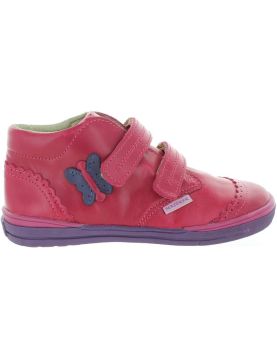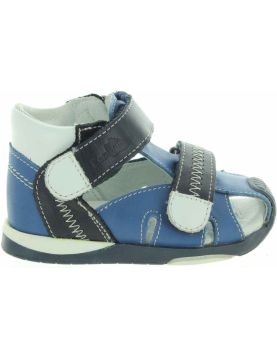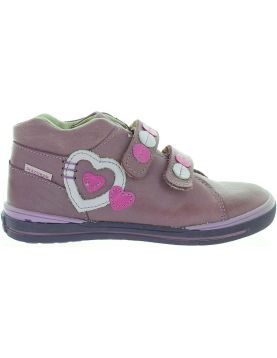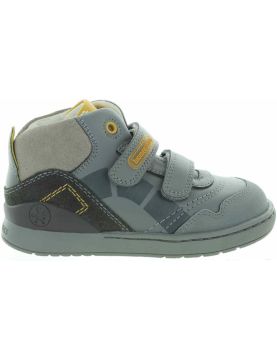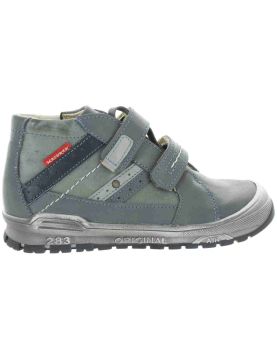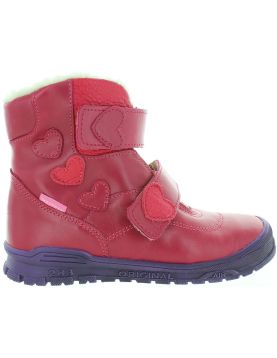Filter
Mazga Pink
Posture support best shoes for kidsYes, shoes affect kids feet and postureSo best orthopedic shoes are needed for every child not just those with orthopedic p..
Azurek Navy
Proper ankle support toddler shoes Weak ankles best support orthopedic shoes for a child High backs shoes for toddlers, needed to prevent and correct ankle pr..
Straton Gray
Boots for toddlers with thick wide feetWide toe box, wide instep, wide soles -- all in one. Made in Spain out of quality leather for boys.Gray smooth leather ..
Hindy Gray
Podiatric shoes for a boy with flat feet.Arches like inflated pillows in those boots Manufactured in Europe according to European orthopedic flat foot standar..
Bow legs, also known as genu varum or knocked knees in kids, occur when a child's legs bow outward at the knees while standing with their feet together and ankles touching. This is common in infants and toddlers due to cramped positions in the womb. Typically, as children grow and bear weight on their legs, the condition can improve naturally by age 3-4, especially with special shoes for bow legs. Persistent or severe bow legs may result from rickets, Blount’s disease, skeletal dysplasia, or genetics. Consultation with a pediatrician or orthopedic specialist is recommended when necessary.
Causes of Bow Legs
- ✅ Normal Development: For most children under age 2, bowed legs are a normal variation that typically improves on its own by age 3 or 4.
- ✅ Blount's Disease: An underlying condition that affects the growth plate of the shin bone, causing abnormal growth and creating a space between the knees.
- ✅ Rickets: A bone disease caused by deficiency in vitamin D, calcium, or phosphorus, leading to softening and malformation of bones.
- ✅ Other Causes: Less common causes include genetic factors, injury, infection, tumors, or lead/fluoride poisoning.
- ✅ Observation: Mild cases typical for the child's age are often monitored by a doctor.
- ✅ Bracing: For Blount's disease, a special brace (knee-ankle-foot orthosis) may be used to correct alignment, sometimes worn up to 23 hours a day.
- ✅ Physical Therapy: Strengthening exercises help improve muscle development in the hips, which aids in proper leg alignment.
- ✅ Surgery: Severe cases not improving with other treatments may require surgery to correct the deformity.
- ✅ Addressing Nutritional Deficiencies: If rickets is the cause, correcting deficiencies through diet, supplements, or sun exposure is crucial.
Buy quality shoes to correct bow legs in babies with stable, reinforced heels and proper orthopedic arch support. Consider kids shoes with good arch support for knocked knees. Even if toddlers’ arches are not fully developed, proper support promotes healthy foot development and alignment.
Stability and SupportWe offer shoes for bow-legged toddlers, boots, and tall sturdy ankle sandals. Proper knocked knees toddler shoes provide stability, alignment, and reduce strain on the knees. European shoes with firm soles and cushioning are especially beneficial.
Wide and High InstepChildren with bow legs often have wide and high instep feet. Best walking shoes for bow legs should accommodate this for optimal foot, knee, and posture support. Antibacterial insoles prevent sweat buildup, even if worn barefoot.
Proper FitShoes to straighten baby legs must fit properly. Shoes that are too tight or loose affect gait and posture. Measure your child's feet regularly and choose shoes that accommodate their growth. European orthopedic shoes help form feet correctly, while low-quality sneakers may deform them.
FlexibilityChoose shoes that allow natural foot movement. Flexible soles and uppers promote comfort and proper alignment. Leave about a thumb's width of space at the toe to allow for growth.
Consistent Use for CorrectionWhen children wear shoes to help with bow legs in kids consistently, ankles align, knees straighten, and feet develop properly. Proper orthopedic shoes act as therapy, correcting the feet over time. This method has been practiced in Europe since 1950 and is considered a medical necessity for children, not just for those with foot issues. Shoes alone aren’t enough—monitor overall development and consult healthcare professionals if needed.
Summary of Key Features- Reinforced heel and ankle support
- Orthopedic arch support
- Wide and high instep accommodation
- Flexible yet stable sole
- European-made quality for long-term correction
Investing in high-quality European orthopedic shoes ensures proper foot alignment, knee positioning, and healthy posture for growing children.

